An Interview with Cedric Christian, AIA
Article published by the Medium on August 16, 2018
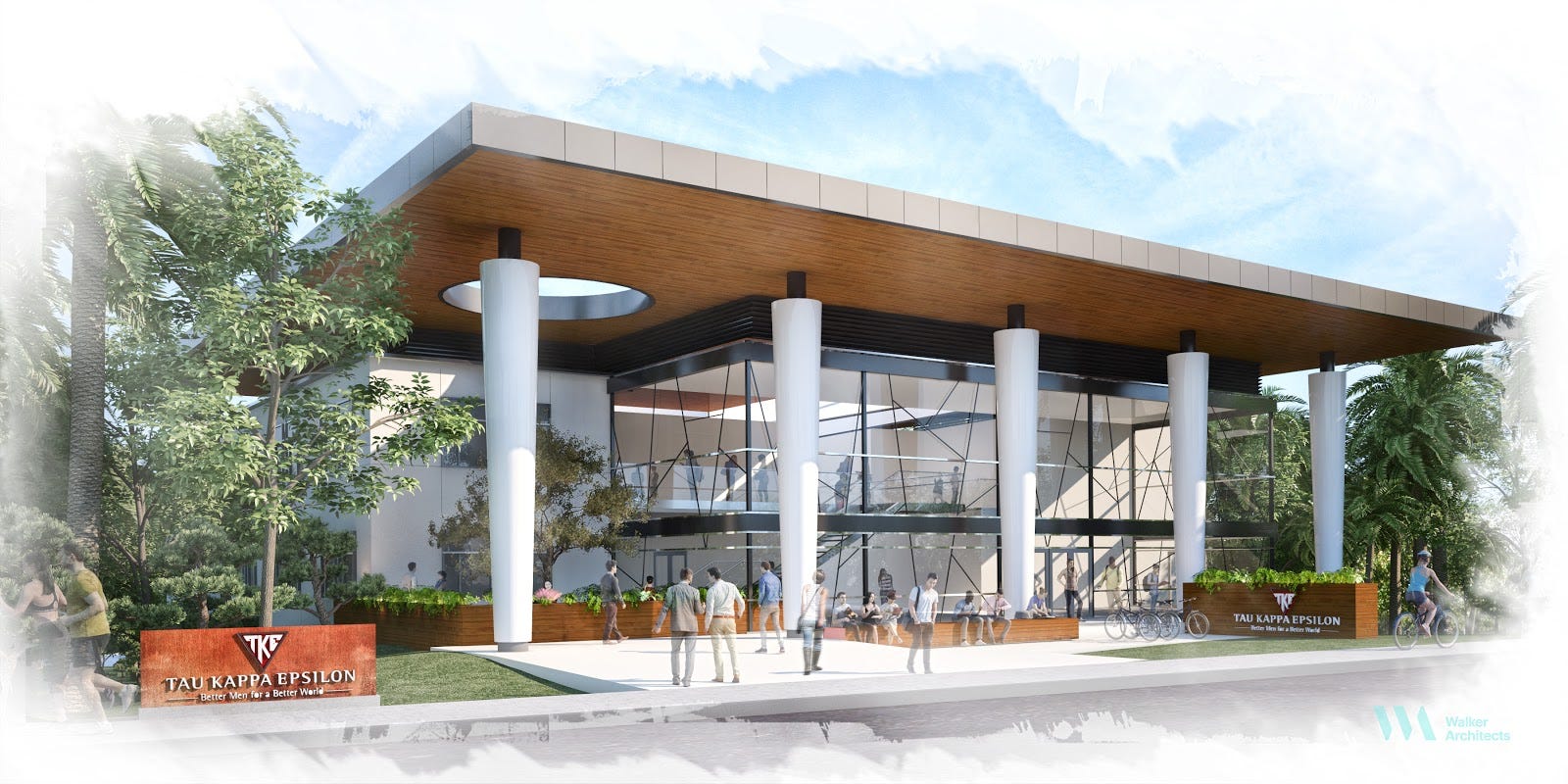
I’ve had a pencil and pen in my hand since I was very young. Typical of many architects, I grew up sketching. Most of that was focused on fantasy, science fiction and images of futuristic cities from my imagination. After a brief brush with studying law, I went back to what I love doing, creating environments where people thrive and are inspired.
For me, faith is hope for the present, raising a family is hope for the future, and creating architecture is inspiration for life. I now have 30 years of experience in the profession of architecture, trained in problem solving and pushing the boundaries of traditional design thought, with a firm foundation in modern style stemming from the Sarasota School of Architecture led by Paul Rudolph and Gene Leedy.
My formal instruction came from the University of Florida under mentors who were influenced by Walter Gropius at the GSD. Twenty-three of those years were spent at a national firm with a wide range of domestic and international projects. These afforded me exposure to advanced architectural theory turned into built environments, associated with Richard Rogers Partnership in the UK and RKD Partners in Ireland. Taught modern-style influences have morphed into current architectural expressions that include explorations into volumes, massing, connectivity and translucency, which is where my current interests lie.
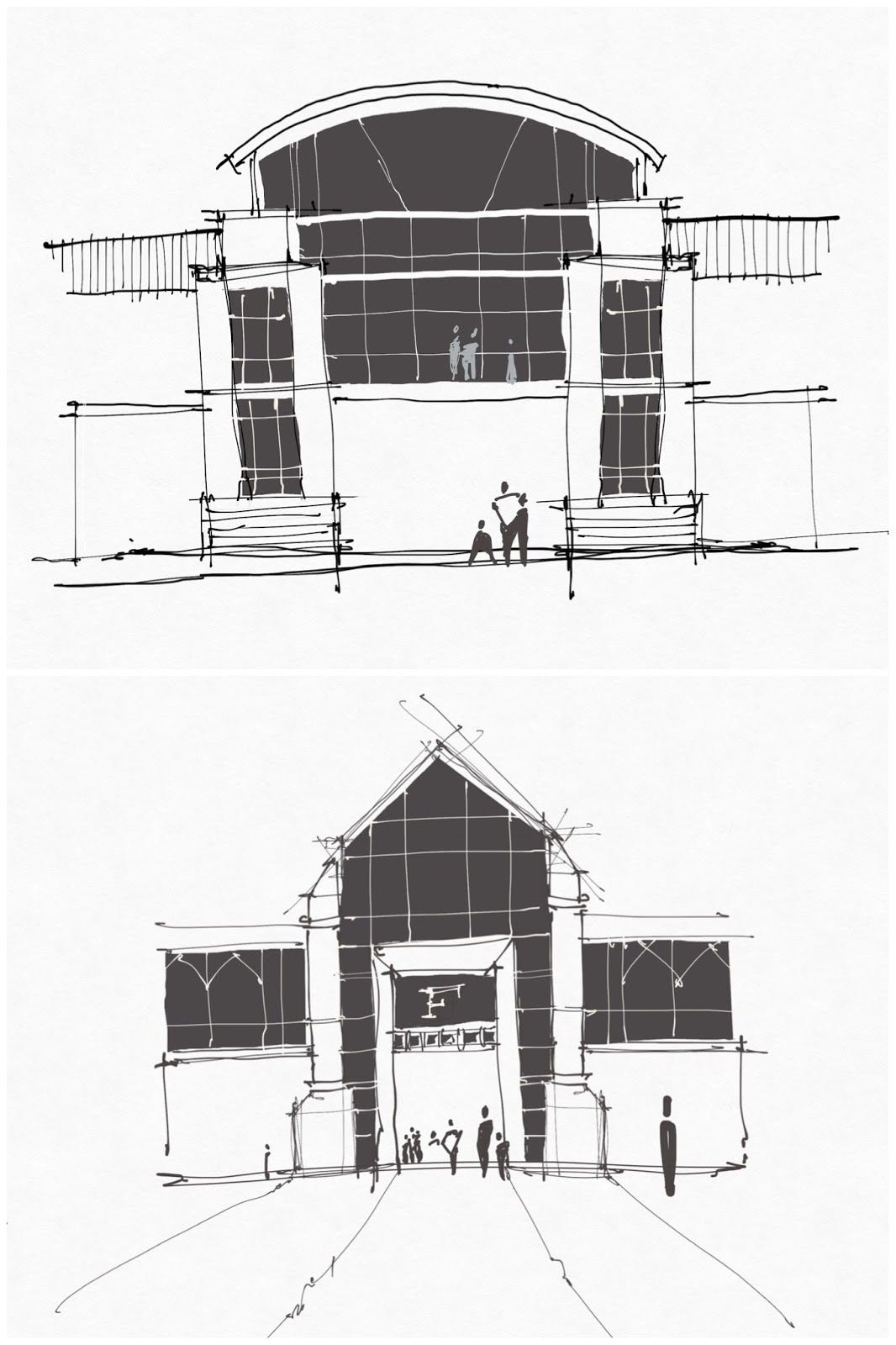
Created in Concepts: Stadium entries.
What are your goals at Walker Architects? What is your personal focus in the company, and what are you trying to achieve with your designs?
I am now Director of Design at Walker Architects in Gainesville, Florida. As Senior Designer (mainly because of my age, we have an office full of amazing designers), I fill the seat of leader of Project Operations. Half my time is spent designing buildings, the other half I’m immersed in internal design and production, partnering, budgeting and office-level scheduling. Walker Architects specializes in complex projects that require thoughtful design, so my background of working with complex building technology and integrating it with design sensitivity is well utilized.
The mission of Walker Architects is to “Make old spaces new, new spaces timeless, and think beyond the limits of architecture”, and we believe that “Design Builds People”. Walker Architects was founded by Joe Walker, AIA in 2009 and has experienced tremendous growth to 18 members in 2018.
Specializing in complex projects, large and small, and incorporating various building types, from historic wood frame to modern concrete and steel, Walker Architects manages each phase of design to provide transformative spaces for our clients. We follow a charrette process to design solutions, deliver a complete document package on schedule, and oversee completion of the construction process.
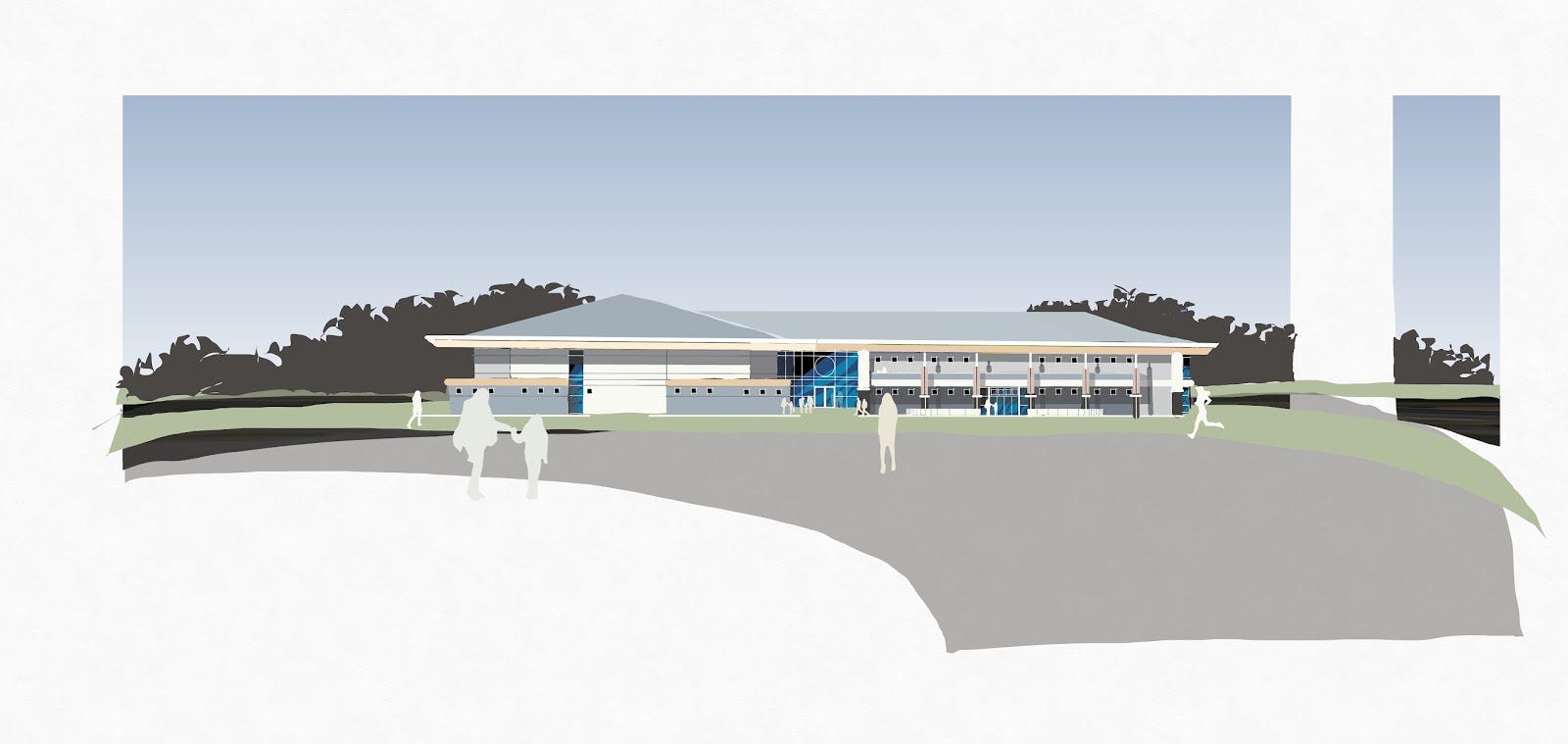
Created in Concepts: Presentation Illustrations — FSUS elevation.
What is your creative workflow like, from the beginning of a design to the end of a project? What tools do you use to accomplish your designs?
My creative workflow involves the use of many different tools. It begins, however, with a clear understanding of the owner’s needs and program. Integration of their principles, symbols and traditions leads to an architectural expression that can address the owner’s scope and aspirations for the project.
Initial design activities include sketching to develop an organization of spaces that reflect both functional and spatial opportunities. The site, the aesthetic fabric of the environment, the visibility and symbolism… each inform the placement of building elements, arrangement of communicating spaces, alignment of interior functions, and the use of light to affect the development of the three-dimensional massing.
Traditional pencil on paper is rarely used, we almost exclusively use Concepts in the early stages of concept development. Here, fundamental images that convey the first notion of project creative thought are readily expressed.
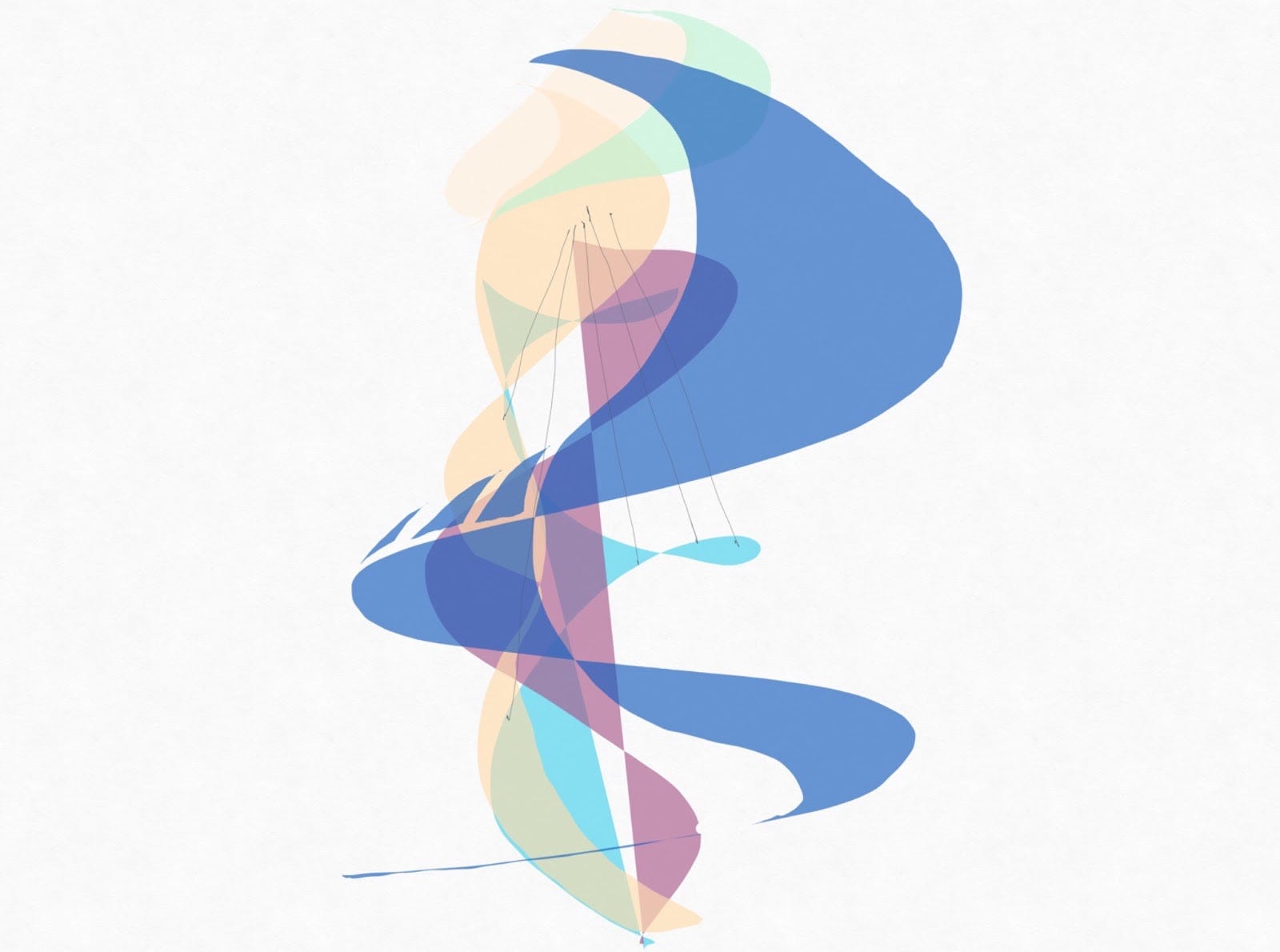
Created in Concepts: Stair design that captures the flowing lines embodied in the art of dance movement of Fred Astaire and Ginger Rogers.
Early explorations into the translucency of volumes, supporting the arrangement of required spaces, are easily studied in the monochromatic range.
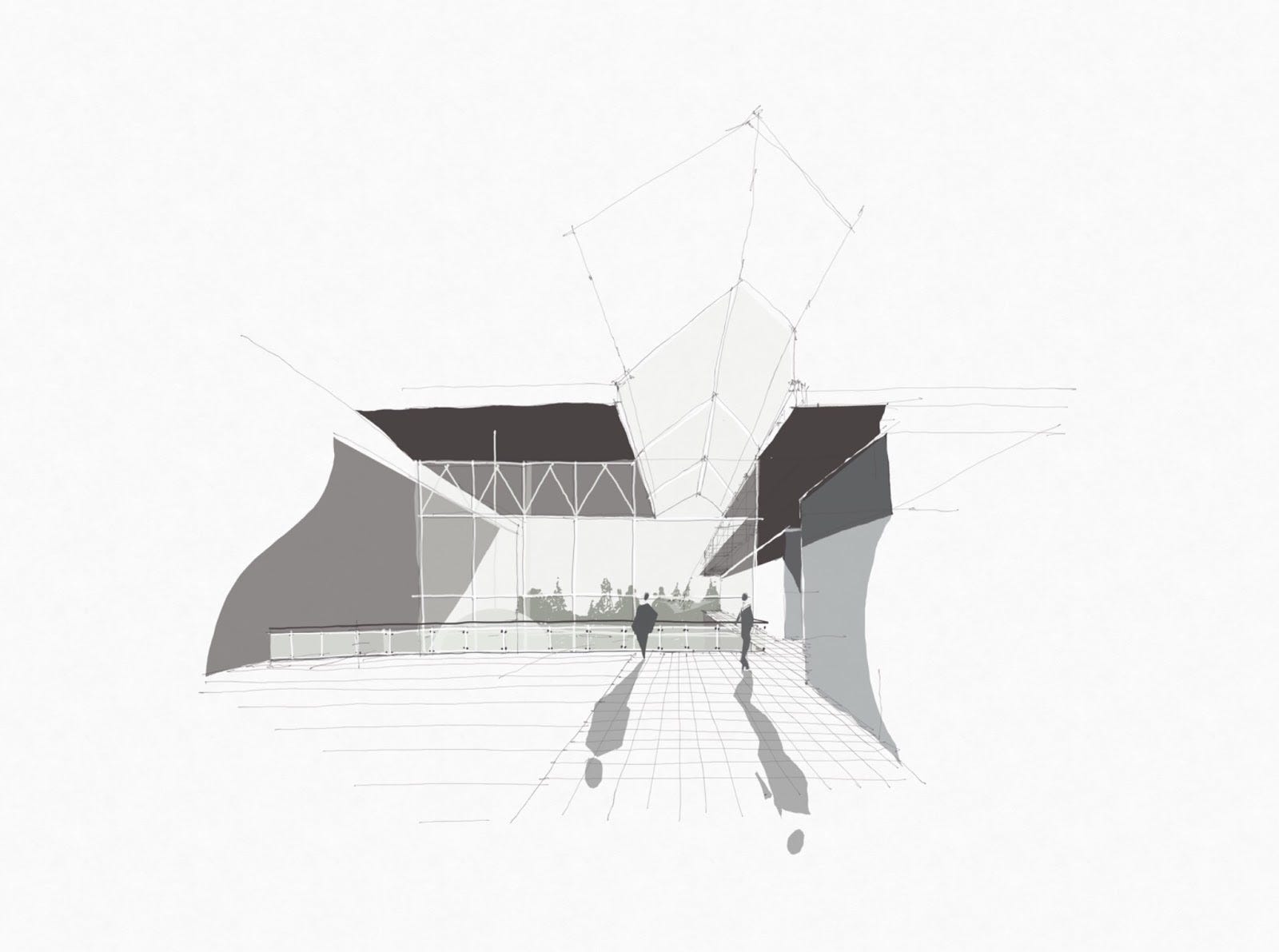
Created in Concepts: Second story fraternity meeting space with expansive exterior views.
Exterior ideas begin to take form, describing entry, pathway, gathering spaces, progression, scale and volume. Shade and shadow are studied.
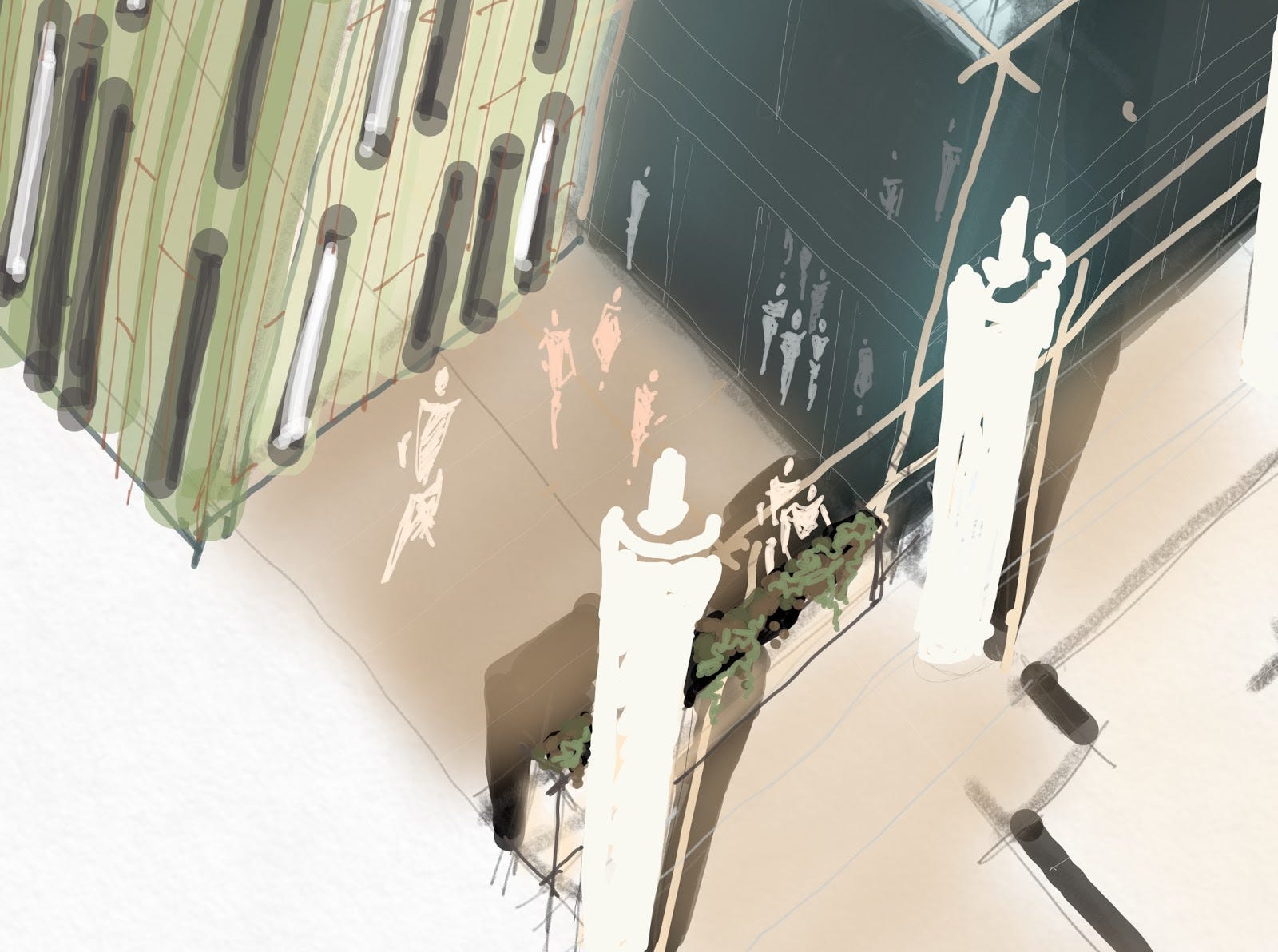
Created in Concepts: Early study for fraternity event deck adjacent to grand lobby space.
The initial design notions captured in early sketches help inform a study of area adjacencies and early building massing. Block and stacking diagrams are developed from the project scope. After initial masses are drawn, they are quickly copied and rearranged into multiple options until an initial relationship diagram coalesces.
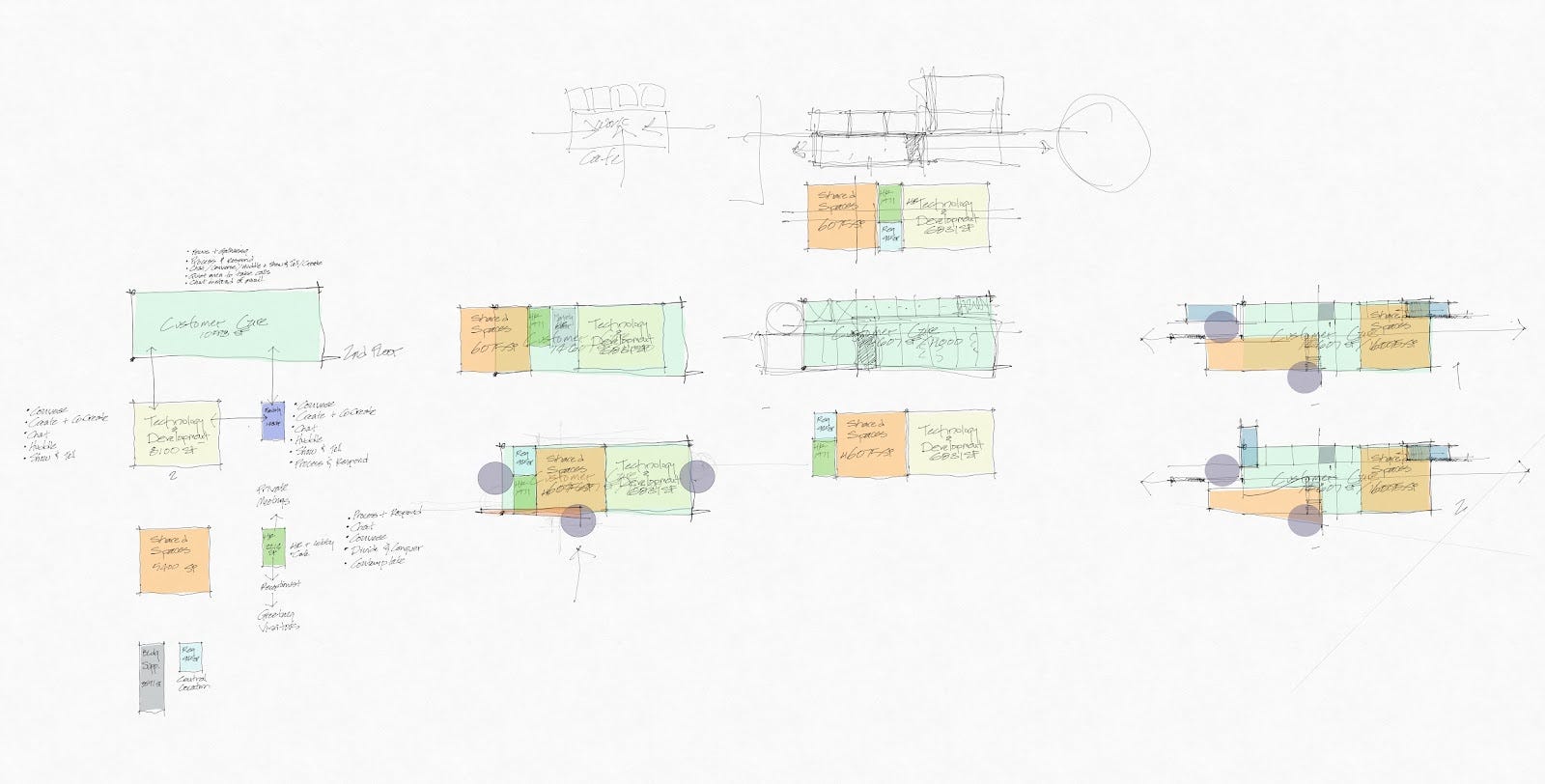
Created in Concepts: Scope definition block & stack diagrams.
SketchUp is used at this stage to progress the area adjacencies diagrams into three-dimensional study development.
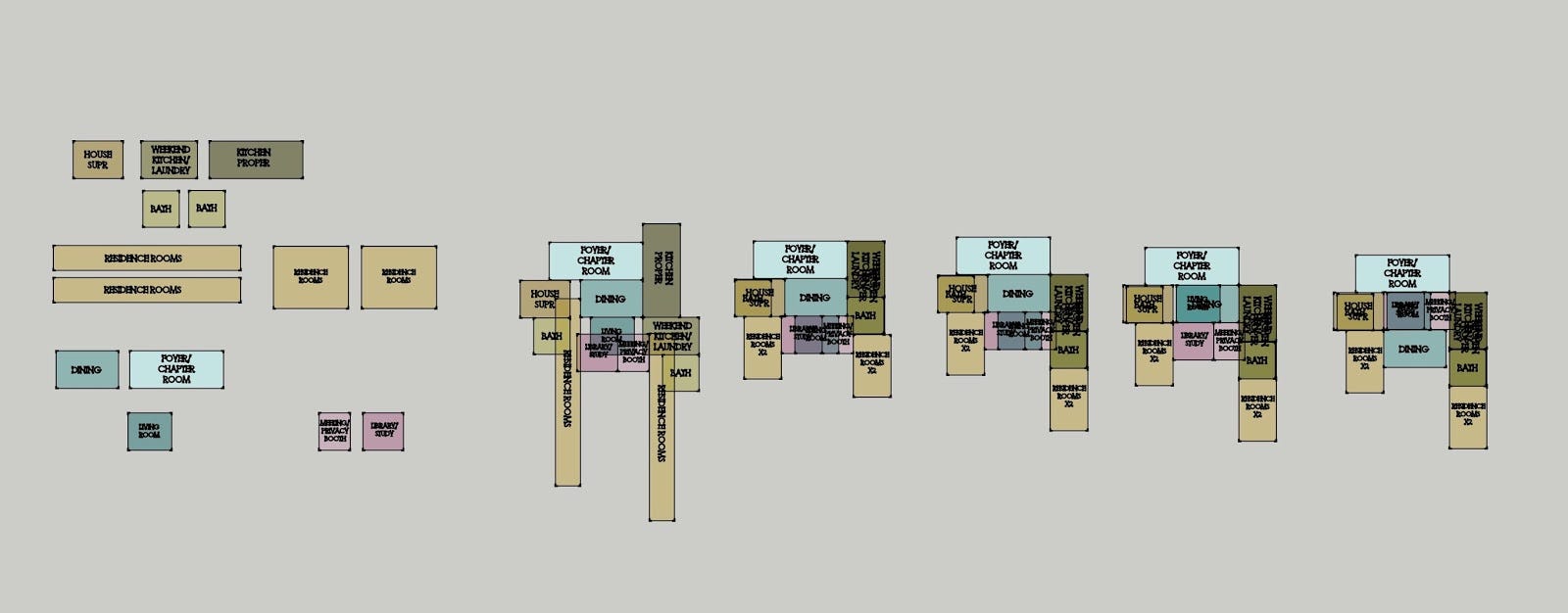
Created in SketchUp: Development of scope definition block & stack diagrams.
The owner then reviews and selects their preferred option to guide the direction of the project. This option is then developed three-dimensionally.
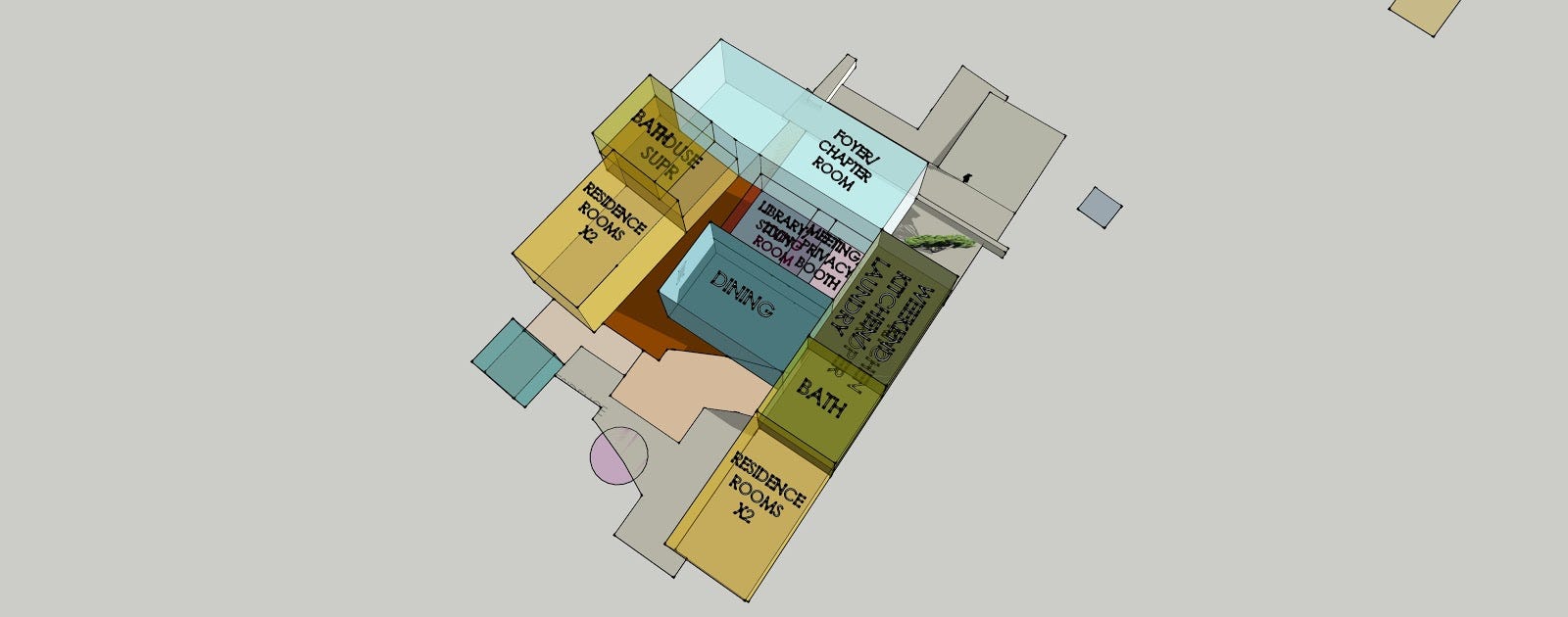
Created in SketchUp: Area relationship massing study.
Design continues with building elements layered in, until the form of the composition is solidified and satisfies the needs and scope of the program.

Created in SketchUp: Visioning study.
Plans are created using Revit, and are concurrently developed with Concepts, SketchUp, 3ds Max + V-Ray and Unreal Engine 4 programs. Concepts is used throughout the design process for initial sketching through design overlay of complementary program output.
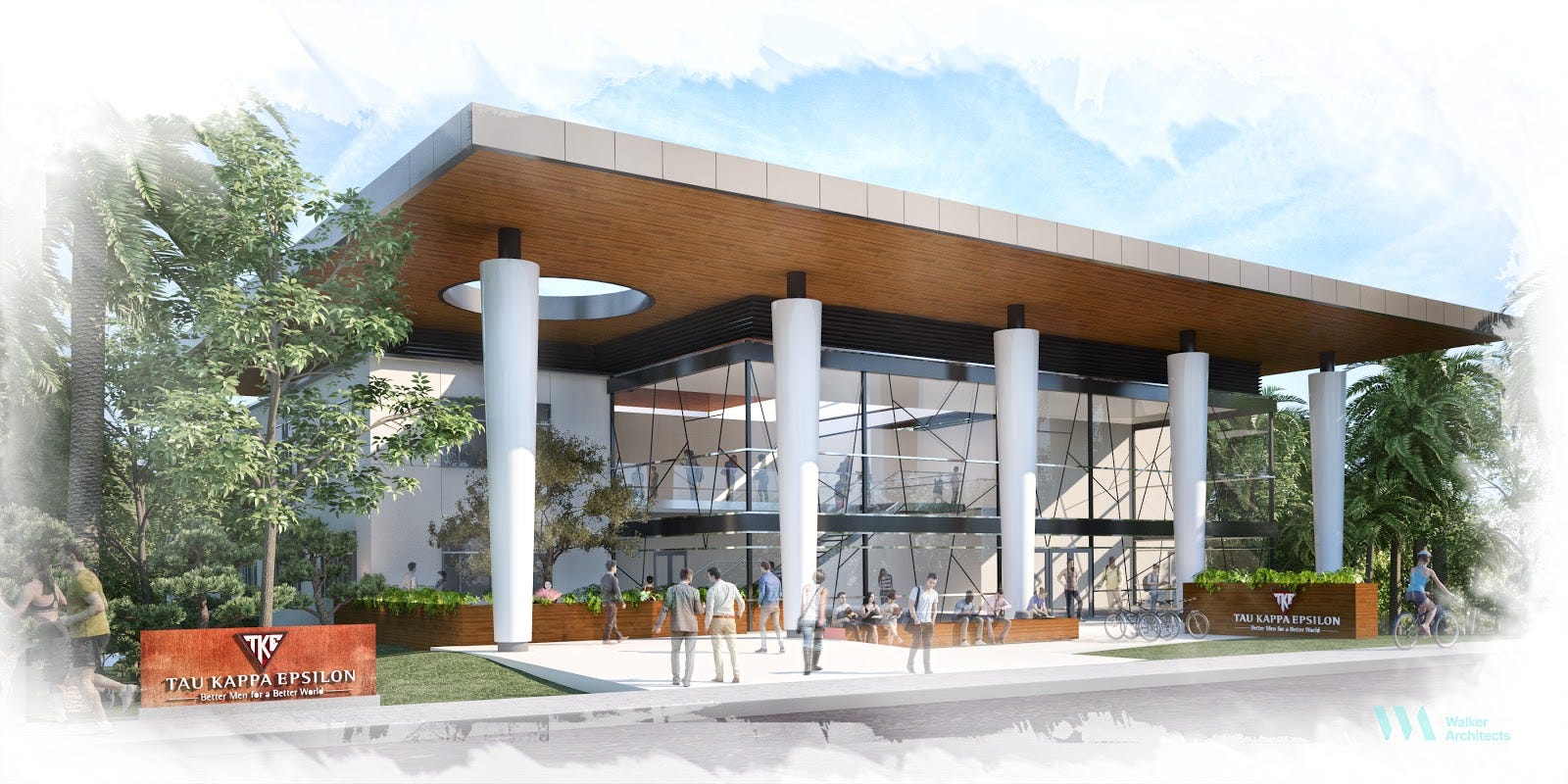
Created in 3ds Max and Concepts: Visioning study.
The 12.9” iPad Pro and Apple Pencil are my tools of choice. The screen size is large enough to allow ample sketch space while still leaving space for Concepts work bars. The iPad Pro has the computational power for fast rendering speeds, and battery life sufficient for my needs. The Apple Pencil used with the iPad is hands down the best stylus I’ve ever used. There’s almost no latency between the tip of the Pencil and image production. With the new brushes and pen types, Concepts covers all the drawing tool selections I need.
Concepts is an integral part of my workflow. It works very well with the iPad and Apple Pencil. (No need for fingers, but they’ll do in a pinch.) It’s great for note taking during meetings of all kinds, sketch options generation, presentation illustrations and operations development. The app excels at layering, this function provides almost limitless creativity. The ability to import from a split screen on the iPad is a helpful shortcut for bringing in information, as well. Overall, Concepts is a pleasure to use and keeps getting better.

Created in Concepts and Revit: Meeting notes.
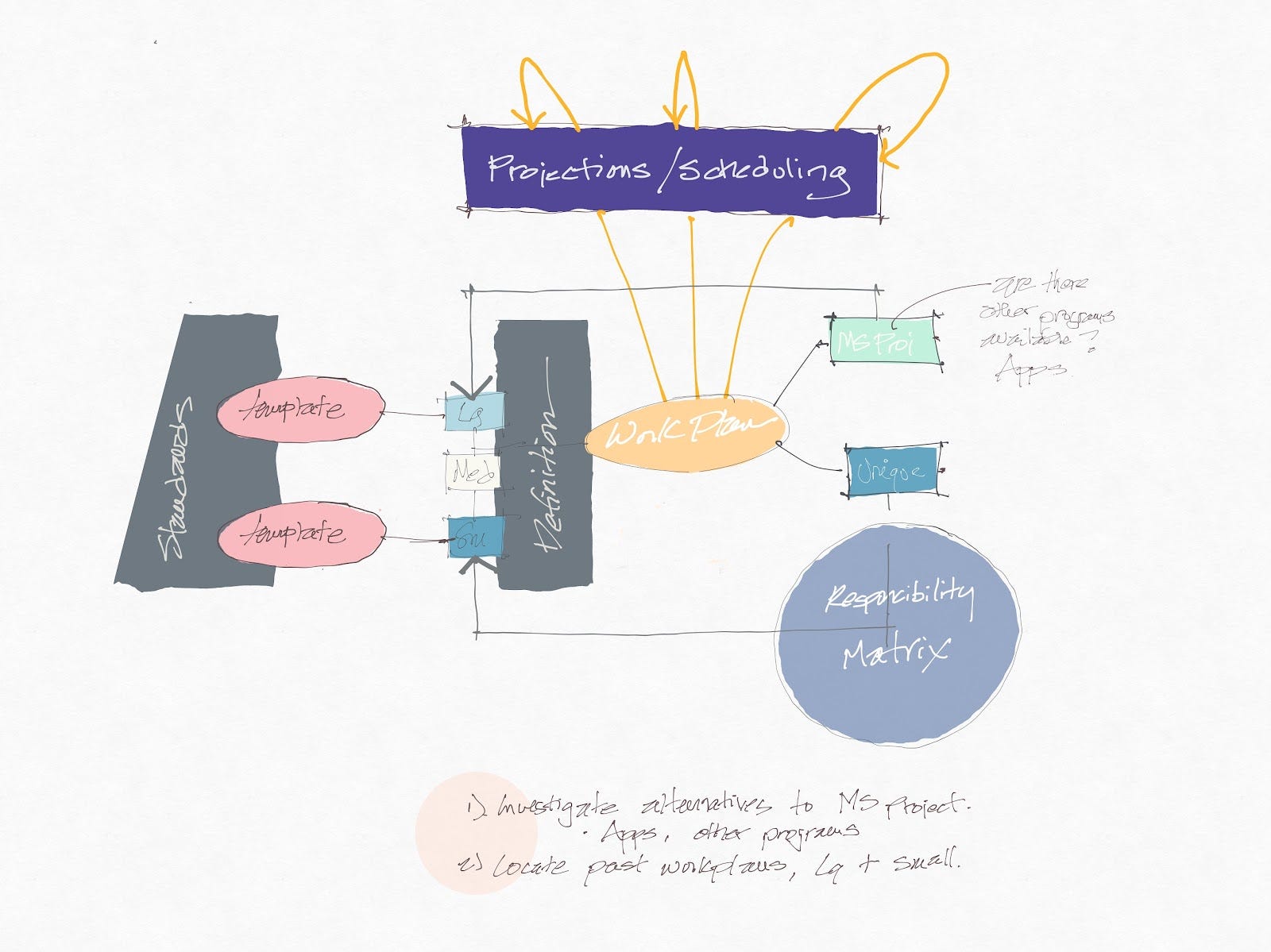
Created in Concepts: Operations development.
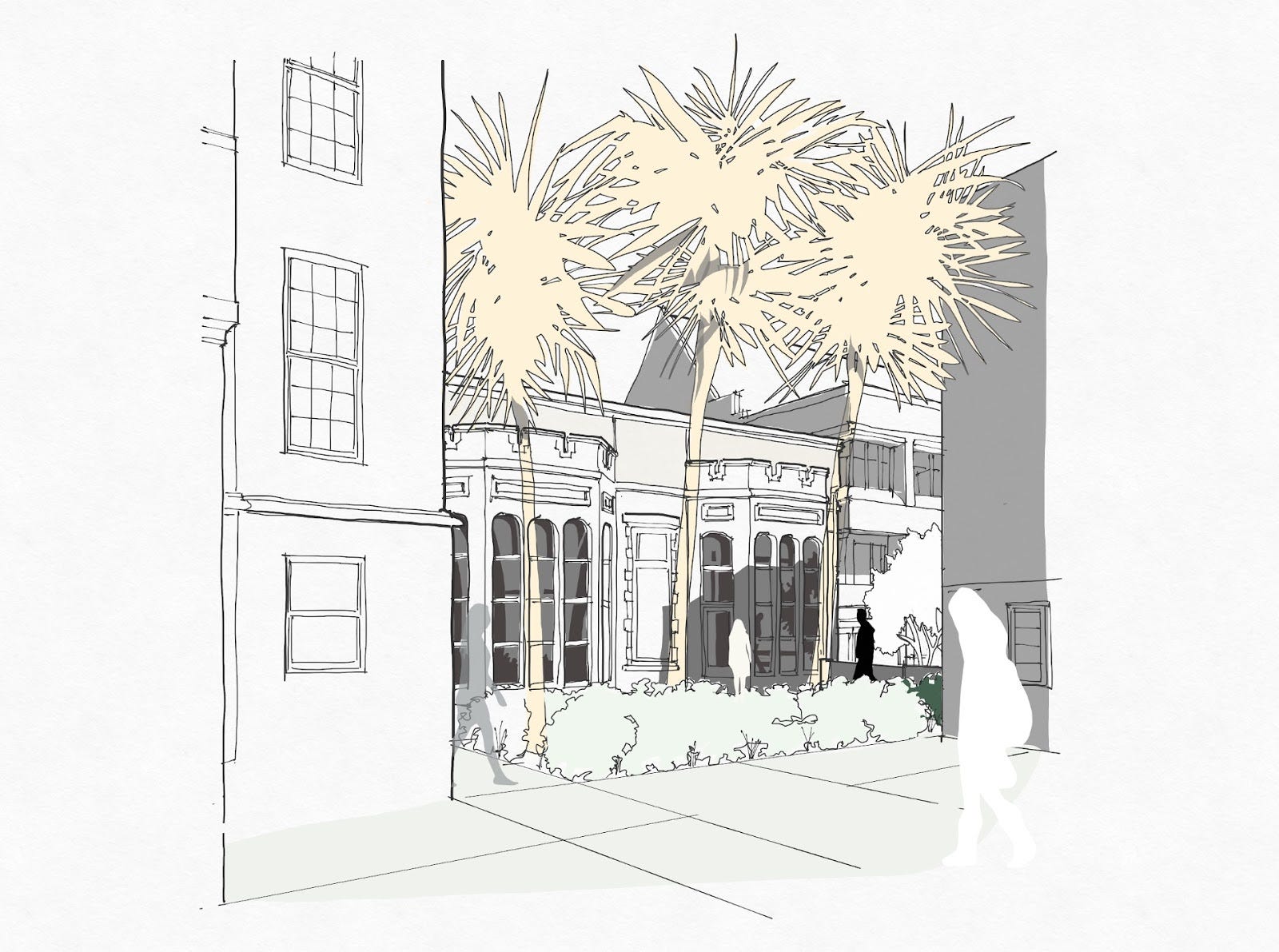
Created in Concepts and Revit: Presentation Illustrations — Norman Hall sketch 1.
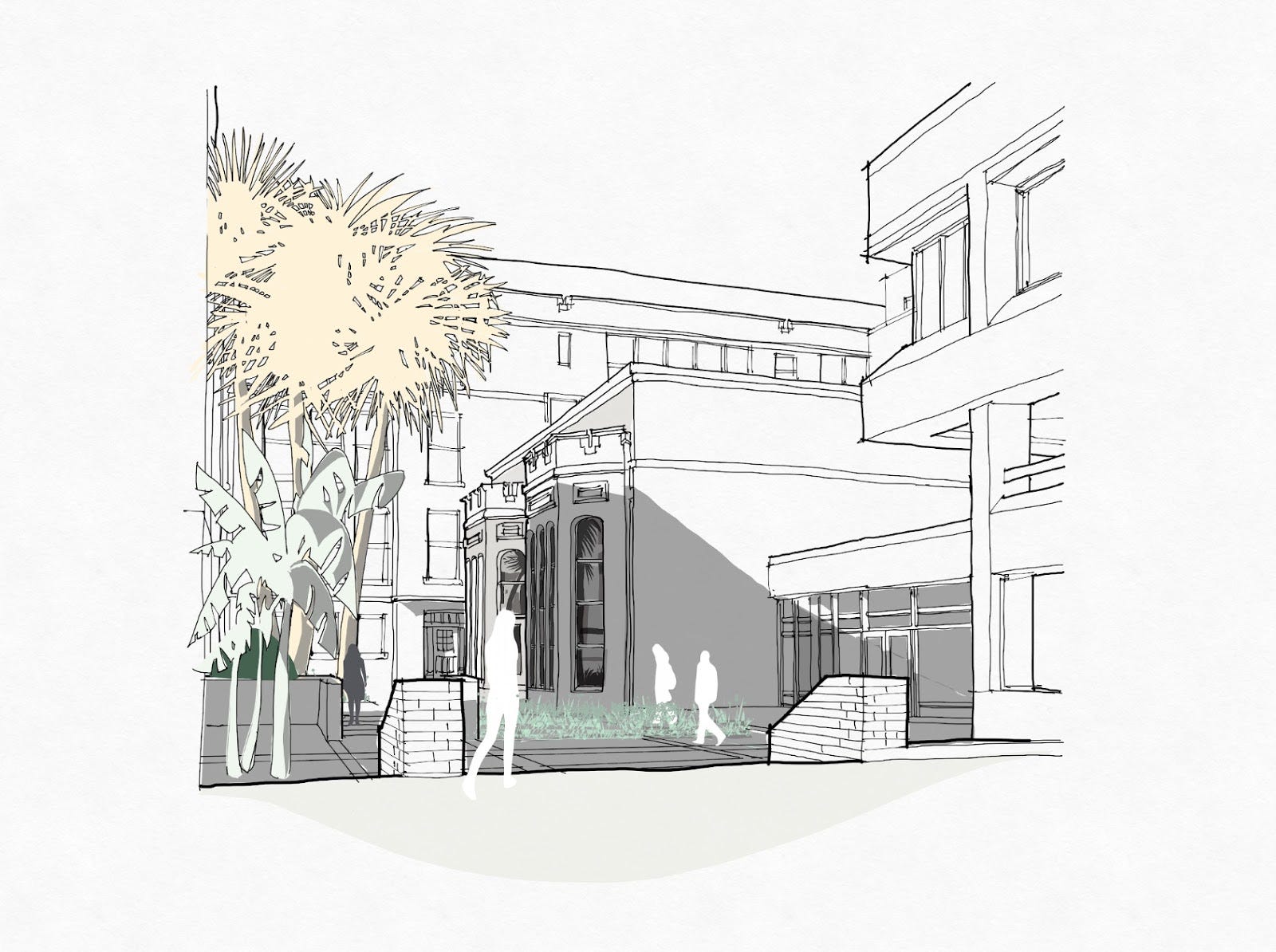
Created in Concepts and Revit: Presentation Illustrations — Norman Hall sketch 2.
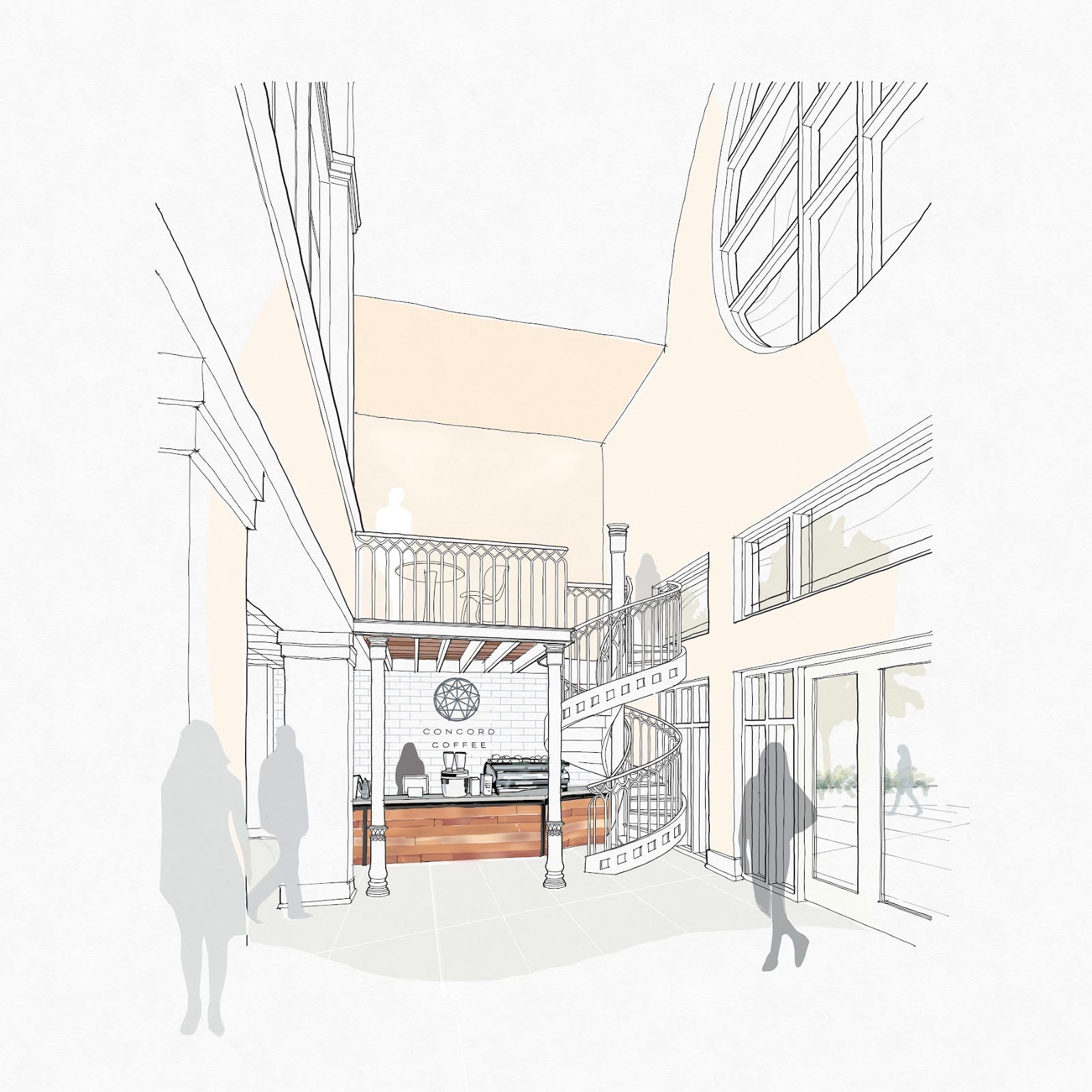
Created in Concepts and Revit: Presentation Illustrations — Concord Coffee.
What is your hope for the future of design? What capabilities do you wish to have as you design your projects?
My hopes for the future of design includes a large Concepts wishlist: greater selection of entourage, object movement within a scene, 3D object generation with Boolean capabilities (Autodesk FormIt-esque in style, but retaining the basic attraction and usability of Concepts), more powerful export engines with reduced size and high definition output for ease of sharing images, easier precision scaling and measuring, rotational capabilities within a perspective sketch, time-based object automation (backgrounds that change over time; a sky that brightens and darkens for time of day or weather), smart floor plan sketches that easily exports to and translates into Autodesk programs, split screen capability within Concepts to allow two (or more) sessions open at one time, native geo-location maps import function, true eraser capability (separate from object selection and deletion, instead of white pixels covering an object), pencil on object transparency adjustment, object self-illumination (light behind glass), and an expanded color selector.
Wishlist aside, Concepts has progressed my design process and workflow beyond traditional pen on paper. It has increased the speed of creating images and instilled wonder into the process. I look forward to the future of what Concepts will bring to design, and am envious of the younger professionals who will be amazed by it.

Cedric N. Christian, AIA lives in Gainesville, Florida with his wife of 39 years and two children. He loves family, friends, road biking, waterskiing and fitness activities. His education includes Bachelor of Political Science — University of Florida (1982), Bachelor of Design — University of Florida (1987), Masters of Architecture — University of Florida (1989). His professional experience includes 1995–2018 Flad Architects, Senior Associate / Senior Designer, 2018 to present Walker Architects, Director of Design, AIA President North Central Florida Chapter (2008), and AIA Honor and Merit Awards for Design Excellence. He specializes in design of complex projects with emphasis in Healthcare, Laboratory, Science and Technology, Research, Educational Facilities and industrial manufacturing, domestic and international.
___
Interview by Erica Christensen — Director of Community at TopHatch
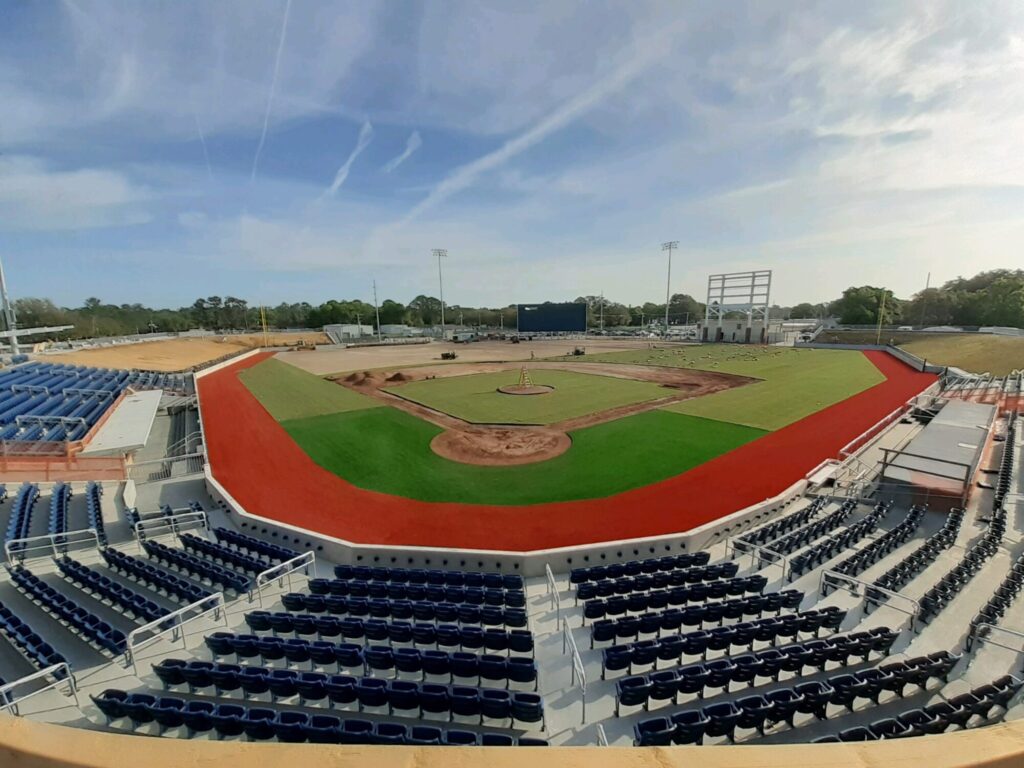
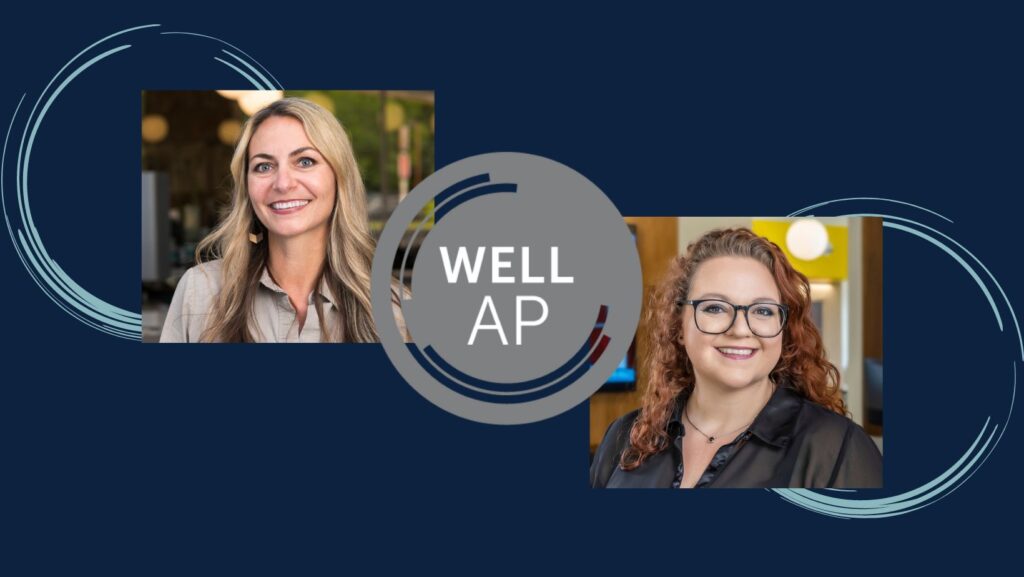
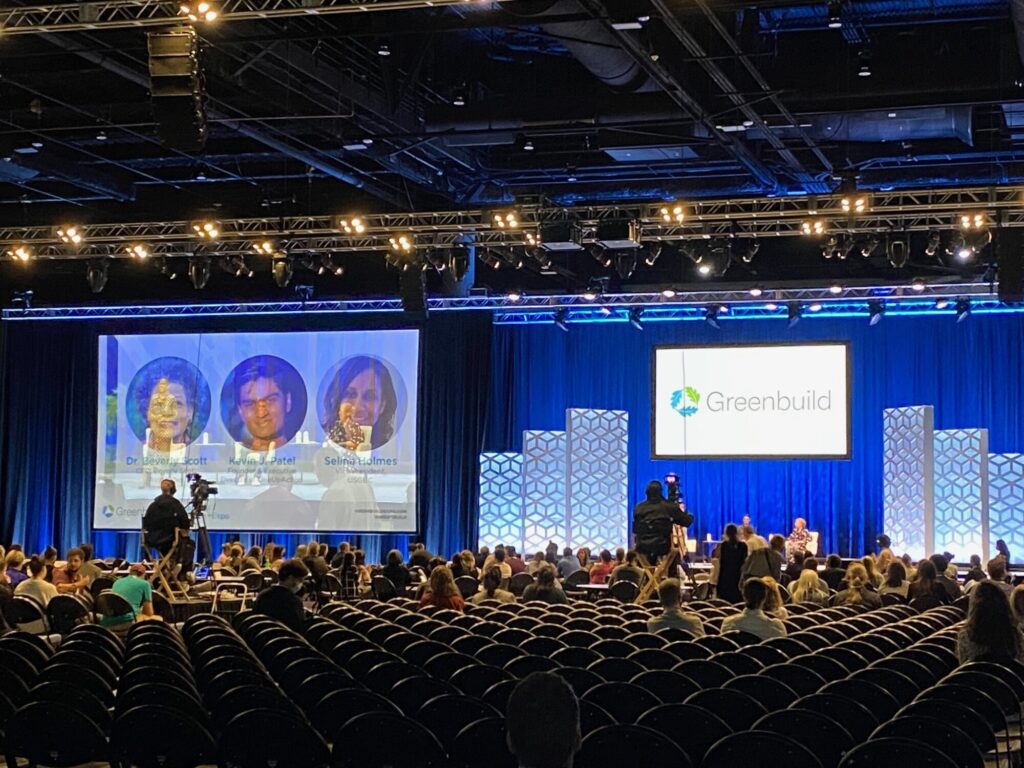
No comments.